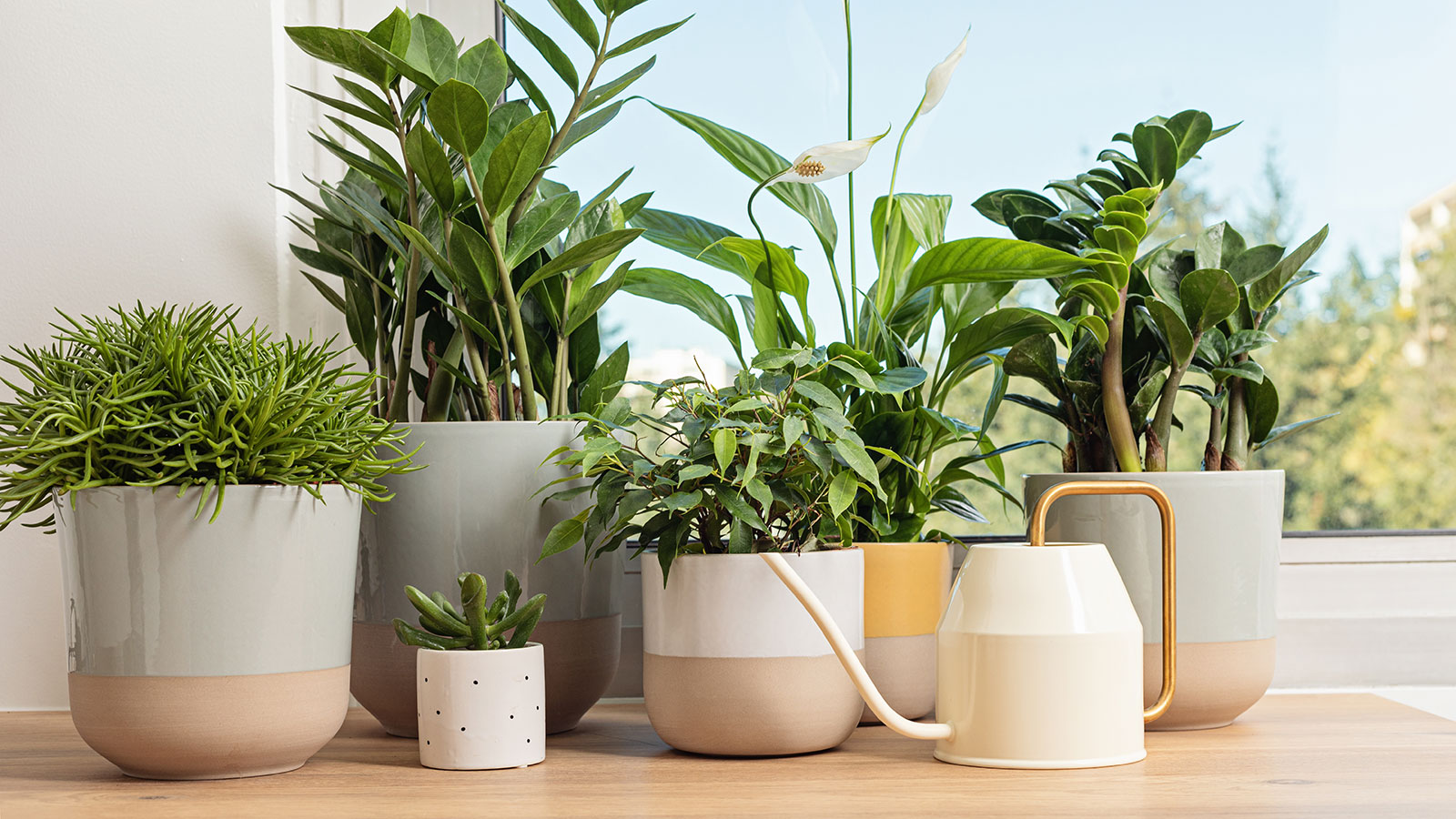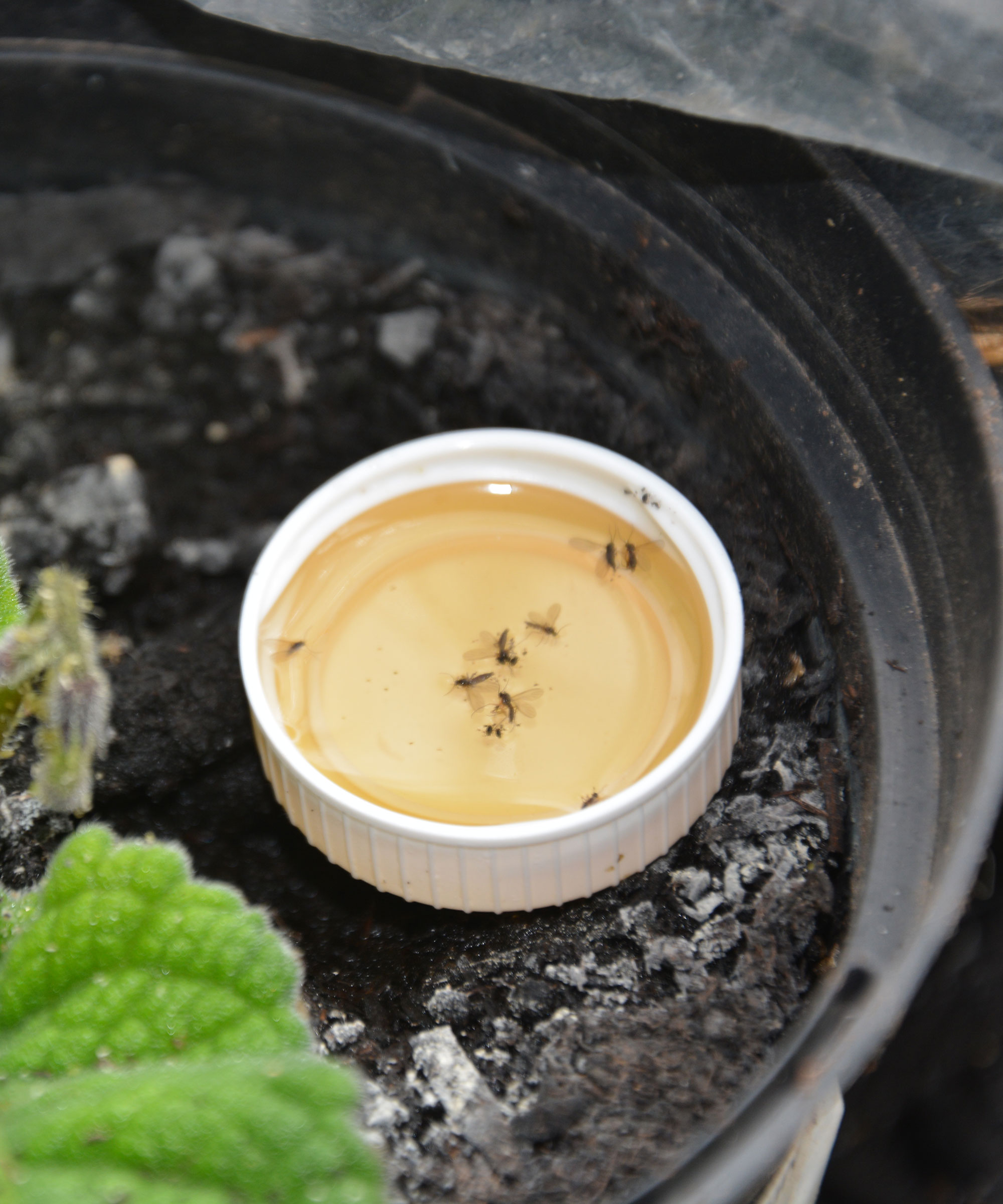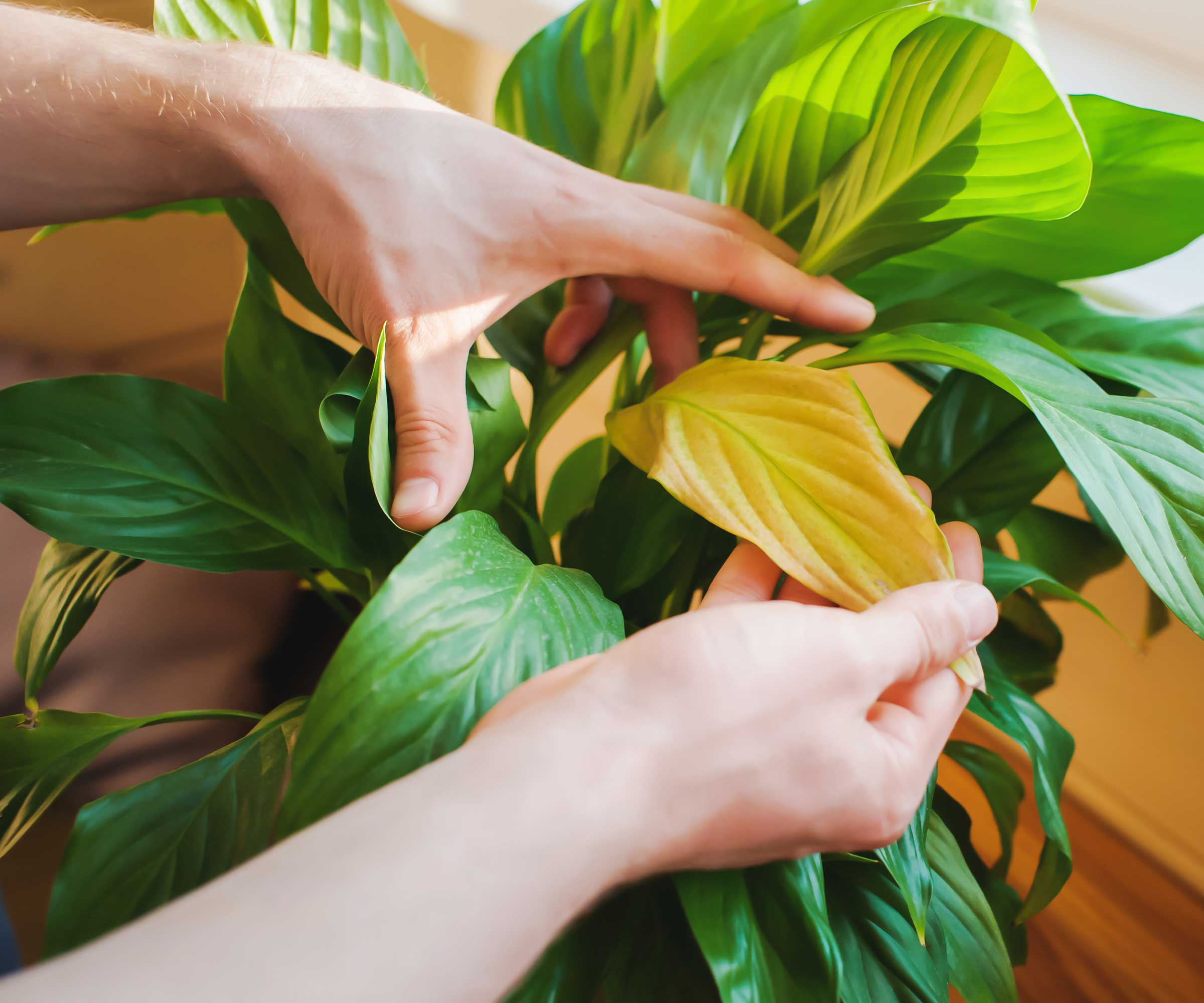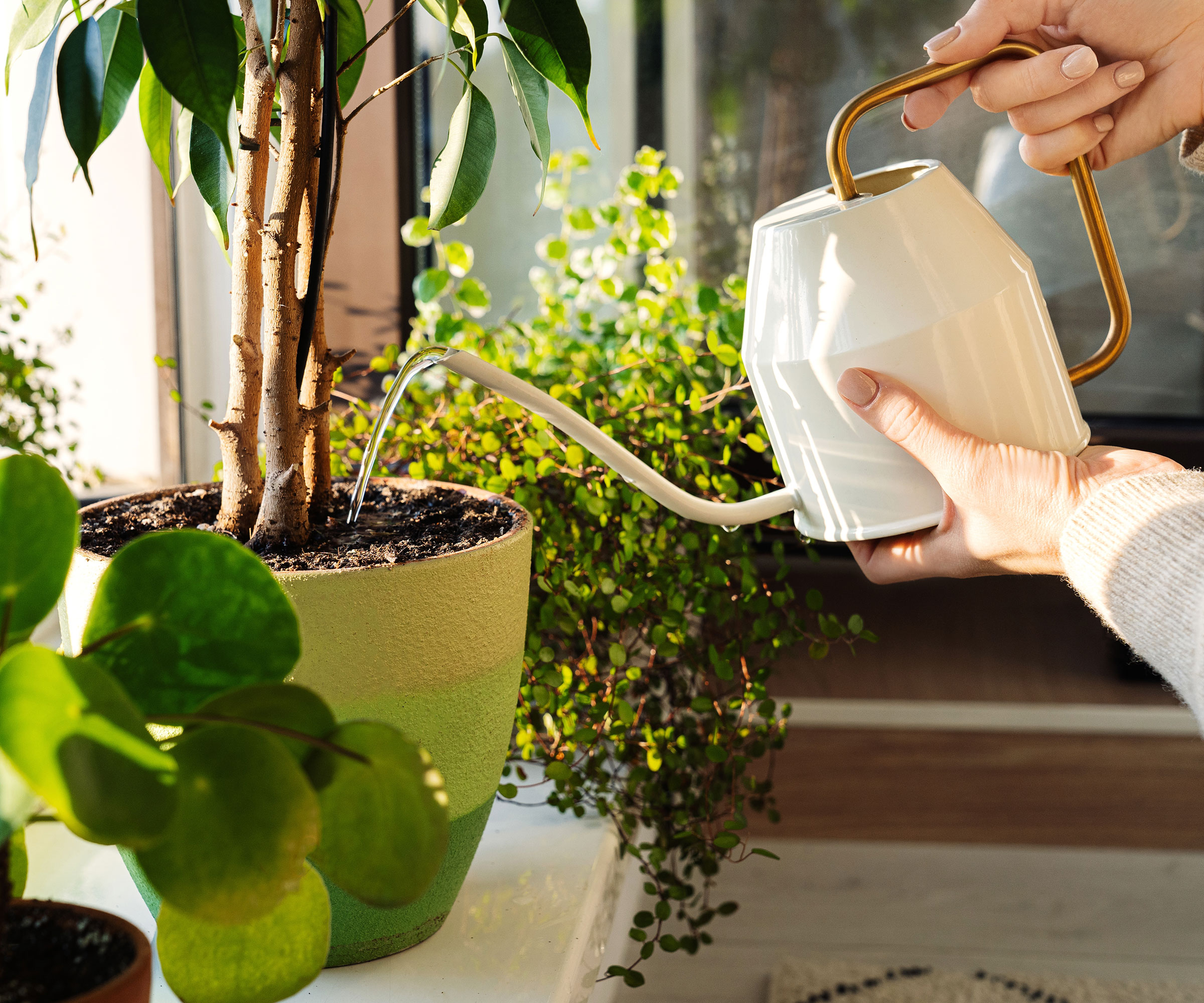Summer houseplant care – 5 top tips to keep plants thriving in a heatwave
Keep your houseplants in top condition with our expert advice


In midsummer, it is so easy to get caught up with jobs in the yard that we can forget to look after our houseplants.
But just like their outdoor cousins, indoor plants grow well in summer and need similar levels of care and attention to keep them flourishing.
Indoor greenery has become increasingly on-trend over the past few years and houseplants are renowned for their air-cleaning qualities, and for improving our health, wellbeing and happiness.
Summer houseplant care: our five essential tips
By following our five expert tips, and avoiding the most common indoor plant mistakes, you will keep your houseplants flourishing all summer long and make sure they are strong and healthy as we head into the fall and winter.
1. Get rid of fungus gnats

A bottle cap filled with water and syrup or honey is a cheap and effective way of getting rid of fungus gnats
More irritating to the grower than the plants themselves, fungus gnats can be a major houseplant problem. Also called scariad flies, they are tiny black insects that can be brought into the house in damp potting soil or on plants that have been outside.
The adults do little damage, but they lay their eggs in damp potting soil and the larvae feed on plant roots. They are especially dangerous to young seedlings because the damage done by the maggots stresses the plants and may cause them to wilt or even die completely.
There are several ways of getting rid of the adults, thus breaking the gnats’ life cycle. One way is to kill them with a chemical spray, such as Garden Safe Houseplant and Garden Insect Killer, available on Amazon. If you are using this indoors, make sure the room is well-ventilated and there are no children or pets around.
Organic methods of control include making sure the potting soil is allowed to dry out before each watering, and using a peppermint oil-based product such as Mighty Mint 32oz Peppermint Plant Protection Spray, also on Amazon.
If you favor a homemade remedy, a cheap, safe and highly effective method of catching and killing fungus gnats is to fill a bottle cap with a few drops of water that has been mixed with honey or maple syrup and place it on the potting soil. The sweetness of the mixture attracts the adult gnats and they fly in and drown. Change the cap every few days and your fungus gnat problem will be a thing of the past!
We don't recommend using sticky fly trap papers as they are indiscriminate killers and will kill spiders and other beneficial beasts that help keep our houses free of unwanted bugs.
2. Remove damaged leaves

We all want our houseplants to look lush and green and healthy but sometimes their leaves turn brown and dry, detracting from their visual appeal. This is because many indoor plants originate in temperate or tropical regions, where the atmosphere is damp and humidity is high.
However, the air conditioning and central heating in our homes dries the air, and our plants suffer accordingly. The exception to this rule is the bathroom, where muted light and high humidity make it one of the best places for a wide range of plants.
Once individual leaves start to brown your only option is to remove them from the base, using slim-bladed plant snips like these Gartol Micro-Tip pruning snips on Amazon, which are ideal for getting among dense stems at the base of plants. Removing dead and damaged leaves makes room for new growth, but take care not to cut away too many at one time.
If most of the leaves are damaged, remove a few, wait until strong new growth is coming through, then remove a few more until all the old ones are gone and the plant consists of lush new foliage.
Once the leaves start to brown, removing them is your only option, but there are several things you can do to prevent it happening in the first place.
The first is to maintain a humid atmosphere around your plant. Do this by standing your plant on a tray or in a pot that has a layer of gravel, like these Lava rock pebbles on Amazon, at the base that is kept constantly damp.
As the moisture evaporates, it creates a small, humid microclimate around the plants, which is beneficial for their health. Then mist the leaves with lime-free water or rainwater every few days (hard water can leave white chalky stains on the leaves). Use a mister such as this Flairosol spray bottle on Amazon.
Finally, avoid placing your plants close to direct sources of heat or cold air, such as radiators, air con units and open fires.
3. Fertilize and water regularly

Houseplants will need more watering in summer when conditions are warmer
Summer is the peak growing time for most houseplants, so they need to be fed and watered accordingly.
The best water to use is harvested rainwater because water from the faucet contains minerals and chemicals that can build up in the potting soil and damage your plants.
If you don’t have access to a rain barrel, collect faucet water in a jug and let it stand for 24-48 hours so most of the chemicals dissipate.
Water every few days, or when the potting soil feels dry to the touch. Don’t overwater, and don’t leave plants standing in water as this will saturate the soil, driving out the oxygen and ‘drowning’ the roots.
Cacti and succulents need very little feeding and watering, and if the soil stays damp it can cause them to rot at the base.
Feed your plants every fortnight with a houseplant fertilizer such as Easy Peasy Liquid All Purpose Indoor Plant Food, which has the right nutrients. For easier feeding, use fertilizer spikes, such as Miracle-Gro Indoor Plant Food Spikes, which will release nutrients at regular intervals. Both are available on Amazon.
Orchids need specific nutrients that can be given in liquid form, such as this Orchid plant food, which will also benefit acid-loving houseplants such as African violets, gardenias and monsteras, or a leaf spray like this Southside weekly fertilizer spray, both on Amazon.
Cacti and succulents need monthly feeding when they are growing, and I like to use this slow-release feed by The Grow Co, available on Amazon.
4. Vacation-proof your plants
It’s vacation time, and unless you have a house elf on your staff your houseplants will be left to fend for themselves while you are away.
There is always a lot to do and think about before going on vacation, but with a little forethought and planning, they will be fine in your absence.
Water and feed them before you go, and stand them on trays of wet gravel to improve the humidity around their leaves. I often leave ours in the bath with a little water. The light and moisture create a warm, humid atmosphere that suits them.
You can also stand plants on capillary matting, like this 2Pack Automatic Plant Watering Mat from Amazon. Stick one end in a bowl of water and the material will absorb enough moisture to keep the plants’ compost damp.
If you close the curtains for security, move plants to a room where there is more light, but keep them out of direct sunlight that can scorch their leaves.
Deadhead any flowers that are likely to go over while you are away. That way you will return home to some optimistic new buds rather than a depressing cluster of brown petals!
5. Provide a vacation for your plants

While we enjoy our vacations, it only seems fair that houseplants have some time outside too. Many indoor plants will thrive in a warm yard. Any rain will wash dust off their leaves and the breeze will help strengthen their stems and roots.
Don’t be too hasty to move them outside though. It is best to wait until nighttime temperatures are in excess of 50C, because most houseplants are varieties from tropical and temperate climates and don’t like the cold. Similarly, return them indoors in the fall when temperatures start to drop again.
When it is warm enough in the yard, start moving plants outside. For the first few days keep them in a sheltered shady area then gradually increase their sunlight each day.
If you immediately expose them to full sunlight they run the risk of leaf scorch and some varieties, such as weeping fig and hibiscus, may initially drop some leaves, though more will grow more once they are acclimatized. If you don’t have any shady areas, create a sheltered area using garden shade cloth, widely available on Amazon.
You may need to water and fertilize your plants more as sun and wind will dry the potting soil, and increased warmth and light will encourage them to put on a growth spurt.
Test the dampness of the compost before watering, to avoid overwatering, and feed with a general-purpose liquid fertilizer added to water every 10 days. You can make life easier by using fertilizer spikes and an irrigation kit like this one on Amazon. Alternatively, fill a bottle with water and a general liquid fertilizer and top it with a Terracotta Vacation Plant Waterer, available on Amazon. Insert the spike into the potting soil and it will slowly release its contents, feeding and watering your plants at the same time.
Knowing when to water is always important, but especially so when watering plants in hot weather, avoiding doing it at the hottest time of day and making sure you give plants a good soaking rather than a little trickle.
Watch out for pests too, especially vine weevils that will eat the roots and aphids that suck sap. There are several ways of getting rid of bugs in potting soil, and when plants are in the yard it is best to let natural predators take care of leaf-dwelling pests, then you can treat the rest with an organic control such as this Natria Neem Oil Spray on Amazon when you return plants indoors in the fall.
Open windows let dust, debris and pests into the house, many of which will land on your houseplants.
This can cause leaves to dull and plants to suffer, and one of the easiest ways to prevent it and keep plants healthy with shiny leaves is to wipe the leaves clean with a soft damp cloth dipped in tepid water.
Sign up to the Homes & Gardens newsletter
Design expertise in your inbox – from inspiring decorating ideas and beautiful celebrity homes to practical gardening advice and shopping round-ups.

Ruth is a Contributing Editor for Homes & Gardens, and formerly Gardening Editor of Amateur Gardening magazine. She is horticulturally trained, with a qualification from the Royal Horticultural Society. Her work for Amateur Gardening, the world's oldest weekly gardening publication, involved matching gardening tasks with each season, covering everything from sowing and planting, to pruning, taking cuttings, dealing with pests and diseases and keeping houseplants healthy. She is an expert in ornamental plants and edible crops, and everything she writes about and photographs is in her own garden, that has been a work in progress since her family moved there in 2012.
-
 How to clean a patio – 6 different methods, and when you must use a chemical cleaning agent
How to clean a patio – 6 different methods, and when you must use a chemical cleaning agentFrom manual scrubbing, natural solutions or calling in the pros, industry experts reveal the benefits and considerations of each method
By Andy van Terheyden Published
-
 Kris Jenner's favorite air fryer, the Ninja Crispi, is the perfect small kitchen solution – it deserves a place on the most compact of countertops
Kris Jenner's favorite air fryer, the Ninja Crispi, is the perfect small kitchen solution – it deserves a place on the most compact of countertopsKris approves of this compact yet powerful air fryer, and so do our own kitchen appliance experts, praising it for its multifunctionality
By Hannah Ziegler Published